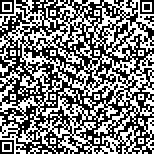| 摘要: |
| 目的 伴随旅游业效益逐步提升,其已成为助推乡村振兴的重要动力,探究两系统的相互作用关系,为我国旅游业和乡村振兴的融合协调发展提供参考。方法 文章以华中地区及区域内河南省、湖北省和湖南省为研究对象,分析2004—2019年旅游业和乡村振兴的相关数据,构建评价指标体系,运用耦合协调分析和灰色关联度模型,探讨二者的耦合关联水平。结果 (1)2004—2019年华中地区旅游业和乡村振兴综合发展指数均呈“持续上升”趋势,分别由0.000 1和0.033 9提升至0.943 3和0.938 1;(2)除2004年,华中地区旅游业与乡村振兴为低度耦合外,2005—2019年均为高度耦合,说明两系统存在良性互动;(3)灰色关联分析发现,住宿和餐饮业增加值、住宿和餐饮业企业营业额、国内旅游人数与乡村振兴子系统的关联度较高,分别为0.720 1、0.711 0和0.707 6;农村居民人均可支配收入、农村居民人均消费支出、农林牧渔业增加值、农村用电量与旅游业子系统的关联度较高,分别为0.759 1、0.756 0、0.755 9和0.722 9。结论 华中地区旅游业与乡村振兴间有较强的耦合关联关系,但仍有较大发展空间,未来应当继续探索其高水平耦合关联的现实路径。 |
| 关键词: 旅游业 乡村振兴 耦合关联 华中地区 |
| DOI:10.7621/cjarrp.1005-9121.20250220 |
| 分类号:F592.7;F327 |
| 基金项目:国家社会科学基金一般项目“民族村寨旅游高质量发展引导乡村振兴机制及路径研究”(20BMZ128);河南省哲学社会科学规划课题“河南乡村振兴与乡村旅游耦合协调发展研究”(2023BJJ039);河南省教育厅人文社会科学课题“乡村振兴背景下河南省乡村旅游发展效率研究”(2024-ZDJH-773) |
|
| ANALYSIS OF THE COUPLING RELATIONSHIP BETWEEN TOURISM INDUSTRY AND RURAL REVITALIZATION IN CENTRAL CHINA |
|
He Jing, Guo Eryan, Zhu Yufang
|
|
College of Forestry, Henan Agricultural University, Zhengzhou 450002, Henan, China
|
| Abstract: |
| With the gradual improvement of tourism benefits, it has become an important driving force to promote rural revitalization. To explore the interaction relationship between the two systems, this article took Central China region and Henan, Hubei, and Hunan provinces as research objects, analyzed relevant data on tourism and rural revitalization from 2004 to 2019, constructed an evaluation index system, and used coupling coordination analysis and grey correlation model to explore the level of coupling correlation between the two systems. The research results showed that from 2004 to 2019, the comprehensive development index of tourism and rural revitalization in Central China showed a "continuous upward" trend, increasing from 0.000 1 and 0.033 9 to 0.943 3 and 0.938 1, respectively. (2) Except for 2004, the tourism industry and rural revitalization in Central China showed a low degree of coupling, while from 2005 to 2019, it showed a high degree of coupling, indicating a positive interaction between the two systems. (3) Grey correlation analysis found that the added value of the accommodation and catering industry, the turnover of accommodation and catering industry, and the number of domestic tourists had a high correlation with the rural revitalization subsystem, with values of 0.720 1, 0.711 0, and 0.707 6, respectively. The correlation between per capita disposable income of rural residents, per capita consumption expenditure of rural residents, added value of agriculture, forestry, animal husbandry, and fishery, rural electricity consumption, and tourism subsystem was relatively high, with values of 0.759 1, 0.756 0, 0.755 9, and 0.722 9, respectively. In summary, there is a strong coupling relationship between the tourism industry and rural revitalization in Central China, but there is still significant development space. In the future, we should continue to explore the practical path of high-level coupling relationship between tourism industry and rural revitalization. |
| Key words: tourism industry rural revitalization coupling correlation Central China |

